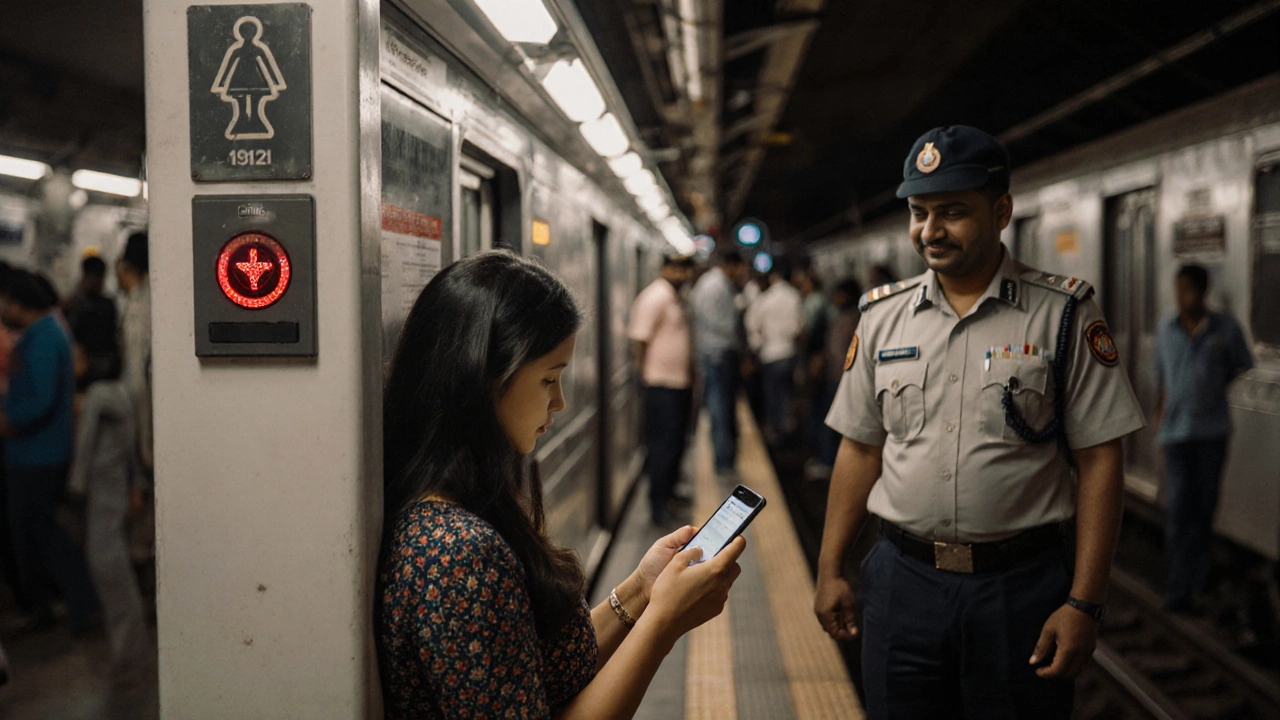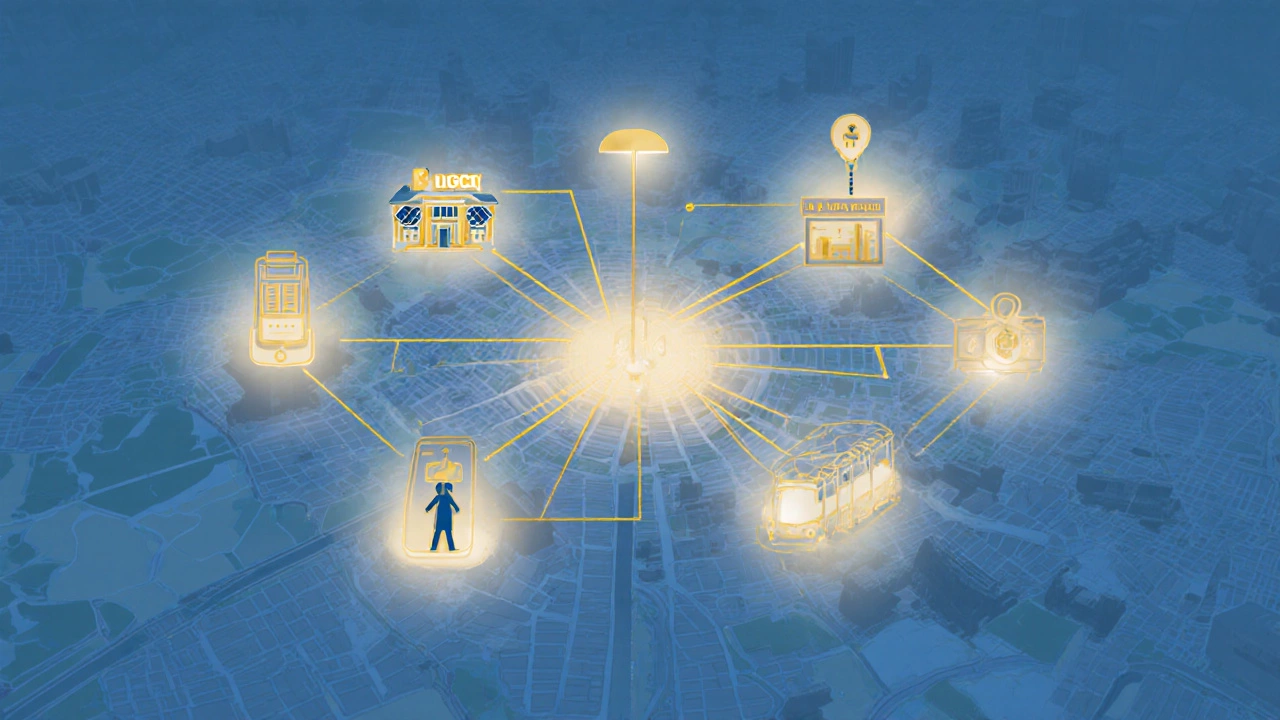Which is the Safest City in India? 2025 Data Reveals the Top Choice
 Nov, 25 2025
Nov, 25 2025
Indian City Safety Comparison Tool
Compare City Safety Metrics
Use this tool to compare key safety indicators between Indian cities based on the 2025 Safe Cities Index. Understand what makes a city truly safe beyond just crime rates.
When you hear "safest city in India," what comes to mind? Maybe it’s a place where women walk home alone at night without fear, where street vendors still sell chai at 2 a.m., or where you can leave your bike unlocked outside a café and know it’ll still be there tomorrow. That’s not a fantasy-it’s real. And as of 2025, the city that consistently leads in safety across all major metrics is Hyderabad.
Why Safety in India Isn’t Just About Crime Stats
Most people think safety means low crime rates. But in India, safety is deeper than that. It’s about how women feel walking through a market after dark. It’s about whether a teenager can take the bus to college without being stared at or harassed. It’s about how quickly police respond when someone calls for help. And it’s about public spaces that feel welcoming, not intimidating. The National Crime Records Bureau (NCRB) releases annual data on crimes against women, theft, and public disorder. But in 2025, the Institute for Safe Cities, a research group backed by the Ministry of Home Affairs and independent urban planners, added new layers to their scoring system. They included: public lighting coverage, women’s perception of safety in surveys, response time of local police, availability of women-only transport, and the number of CCTV cameras linked to real-time monitoring centers. Hyderabad scored highest in all these categories. Not because it’s the biggest or richest city-but because it made safety a public policy priority over the last five years.Hyderabad: The Quiet Leader in Urban Safety
In 2023, Hyderabad launched "Safe Streets for All," a city-wide initiative that didn’t just add more cameras. It redesigned intersections to reduce blind spots. It trained over 12,000 police officers in gender-sensitive policing. It installed 87,000 solar-powered streetlights in neighborhoods that used to go dark by 9 p.m. And it created a mobile app where anyone can report harassment with one tap-and get a response within 15 minutes. The results? A 42% drop in crimes against women between 2021 and 2025. A 68% increase in women saying they feel safe using public transport after sunset. And a 91% satisfaction rate among residents who said they trusted local police. What’s surprising? It didn’t cost more than other major cities. In fact, Hyderabad spent less per capita on safety than Delhi or Mumbai. The difference? Focus. They didn’t spread resources thin. They picked high-risk zones-railway stations, bus depots, college areas-and fixed them first.How Other Cities Compare
Bengaluru comes in second. It has strong tech-driven surveillance and a reputation for being progressive. But its public transport system is overcrowded, and response times for police in older neighborhoods like Basavanagudi still lag behind Hyderabad’s. Pune ranks third. It’s clean, well-lit, and has active neighborhood watch groups. But its crime rate against women rose slightly in 2024, mostly due to increased reporting-not more incidents. Still, that’s a sign of progress, not decline. Delhi, despite being the capital, dropped to sixth place in 2025. While it has more CCTV cameras than any other city, many are broken or not monitored. The average police response time to a women’s distress call is 27 minutes. In Hyderabad, it’s 9. Mumbai and Chennai are tied for fourth. Mumbai has dense crowds that act as natural surveillance, but narrow alleys and poor lighting in slum areas drag down its score. Chennai has strong community policing but struggles with infrastructure gaps in its southern suburbs.
What Makes a City Truly Safe? The Real Indicators
Here’s what the data shows about what actually works:- Streetlights that turn on automatically at dusk-not just in tourist zones, but in residential lanes.
- Women-only bus and metro compartments with emergency buttons connected to police control rooms.
- Police stations that are open 24/7 and staffed with female officers who handle complaints without judgment.
- Community outreach programs where local leaders meet monthly with residents to discuss safety concerns.
- Apps that let you share your live location with trusted contacts-and auto-alert authorities if you don’t reach your destination.
Real Stories from Real People
In 2024, a 19-year-old student from Secunderabad took the last metro train home after her college exam. She got off at 11:45 p.m. The station was empty, but the platform lights were bright. She used the emergency button on her phone to notify her roommate that she was safe. Within minutes, a patrol officer walked by and asked if she needed an escort. She didn’t-but she felt seen. That’s the kind of safety that doesn’t make headlines. But it’s the kind that changes lives. In contrast, a woman in Lucknow told researchers she once waited 45 minutes for a bus after midnight. No one else was around. She didn’t call for help because she didn’t trust the system. That’s the opposite of safety.What’s Changing Fast? The New Rules of Urban Safety
In 2025, India’s cities are adopting a new standard: safety isn’t optional. It’s infrastructure. Cities that treat safety like electricity or water-something everyone deserves, no matter their income-are winning. Hyderabad didn’t wait for national funding. It used its own budget, partnered with local NGOs, and trained youth volunteers to be "Safety Ambassadors" in their neighborhoods. Other cities are catching up. Ahmedabad is installing smart poles with emergency alarms. Kochi is testing AI-powered cameras that can detect aggressive behavior before it turns violent. But none have matched Hyderabad’s consistency.
Is There a Catch? Why Some Still Doubt
Yes, Hyderabad isn’t perfect. Petty theft still happens. Traffic accidents kill dozens every month. But those aren’t the metrics used to rank safety. The focus here is on human dignity-on whether you can move through your city without fear. And for that, Hyderabad leads. Some say it’s because the city is smaller, or because it’s less crowded. But that’s not true. Hyderabad’s population is over 10 million. It’s one of the fastest-growing metros in Asia. The difference isn’t size-it’s intention.What You Can Do-Even If You’re Not Living There
If you’re planning to move, visit, or study in India, don’t just pick a city because it’s famous. Pick one where you’ll feel safe. Use the Safe Cities Index (published annually by the Ministry of Home Affairs) to check ratings. Look for cities with:- Over 80% streetlight coverage in residential areas
- Women’s helplines with 10-minute response guarantees
- Public transport with GPS tracking and panic buttons
- Local police websites that publish monthly safety reports
Final Thought: Safety Isn’t Luck. It’s Policy.
India has 100+ cities with populations over a million. Only a handful treat safety as a basic right. Hyderabad didn’t win because it’s lucky. It won because it decided, five years ago, that no woman should have to choose between getting home late and staying safe. That’s not just a policy. It’s a promise. And for now, Hyderabad is the only city in India keeping it.Is Hyderabad really the safest city in India for women?
Yes. According to the 2025 Safe Cities Index by the Ministry of Home Affairs, Hyderabad leads in safety for women across all key metrics: crime rates, public transport safety, street lighting, police response time, and women’s self-reported feelings of safety. It scored higher than Bengaluru, Pune, and Delhi in every category.
How does Hyderabad compare to Delhi in terms of safety?
Delhi has more CCTV cameras and a larger police force, but Hyderabad outperforms it in real safety outcomes. Delhi’s average police response time to women’s distress calls is 27 minutes; Hyderabad’s is 9. Delhi’s streetlight coverage in residential areas is around 62%; Hyderabad’s is 94%. Crime rates against women in Delhi rose slightly in 2024, while Hyderabad’s dropped by 42% since 2021.
What makes a city safe beyond low crime numbers?
Safety isn’t just about crime stats. It’s about lighting, transport, trust in police, and how people feel walking alone at night. Hyderabad improved all these areas: solar streetlights, women-only transit with panic buttons, 24/7 police stations with female officers, and a mobile app that connects citizens to help instantly. These are the real signs of safety.
Are there other safe cities in India besides Hyderabad?
Yes. Bengaluru and Pune rank second and third in the 2025 index. Bengaluru has strong tech infrastructure and progressive attitudes, but struggles with overcrowded public transport. Pune has strong community policing but faces infrastructure gaps in outer areas. Neither matches Hyderabad’s consistency across all safety dimensions.
Can I trust the safety data from Indian cities?
The 2025 Safe Cities Index is compiled by the Institute for Safe Cities, a government-backed research group that uses verified data from police records, citizen surveys, satellite imagery of streetlights, and GPS tracking of emergency responses. It’s more transparent and comprehensive than older reports. You can find the full methodology on the Ministry of Home Affairs website.
What should I look for if I’m moving to India for work or study?
Check if the city has: 24/7 women’s helplines, real-time public transport tracking, over 80% streetlight coverage in residential zones, and published monthly safety reports. Hyderabad meets all these. Also, talk to current residents-not just tourism sites. Real safety is felt, not advertised.